Biostar TPower i55 – Super Middle Weight Contender
by Rajinder Gill on November 25, 2009 12:00 PM EST- Posted in
- Motherboards
Today’s test subject is the Biostar TPower i55 that can be purchased for around $180 at various e-tailors.
TPower i55 Feature Set
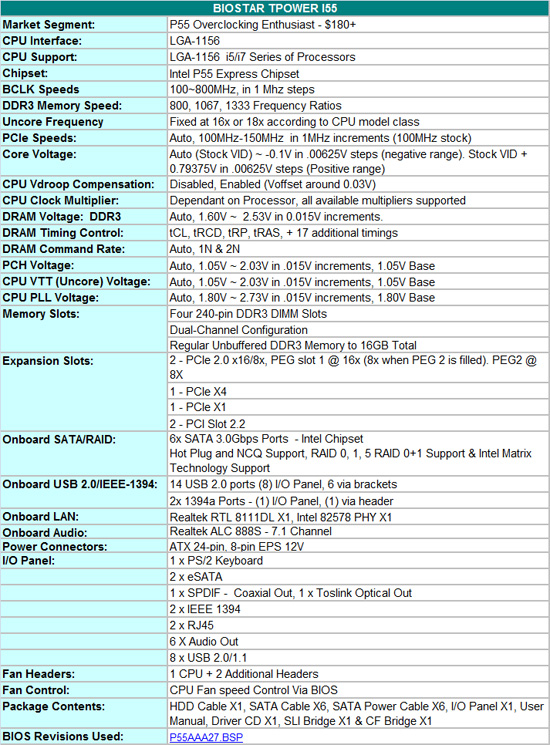
BIOSTAR includes a full featured set of components like the Realtek ALC 888 HD audio codec, dual LAN (Realtek RTL 8111DL & Intel 82578), LSI FW322 IEEE-1394a, JMicron JMB363 eSATA , and full support for the Core i7/i5 S1156 processor series.
Bundled in the box, you get the standard rear I/O panel cover along with 1 x IDE cable, 6 x SATA cables, 6 x SATA power cables, SLI and CF bridges, an informative manual, and a software/driver CD.
TPower Software
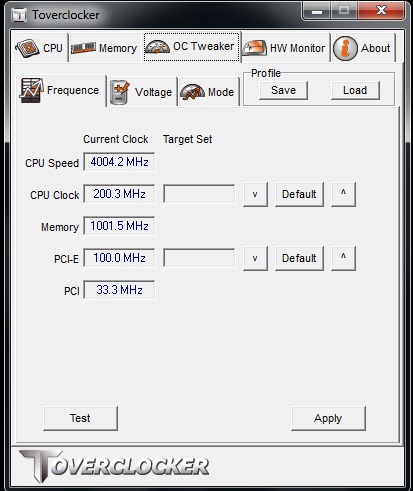
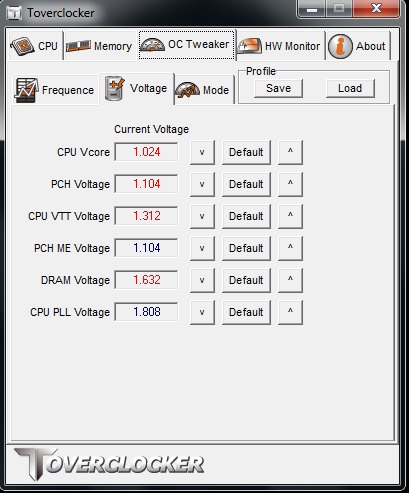

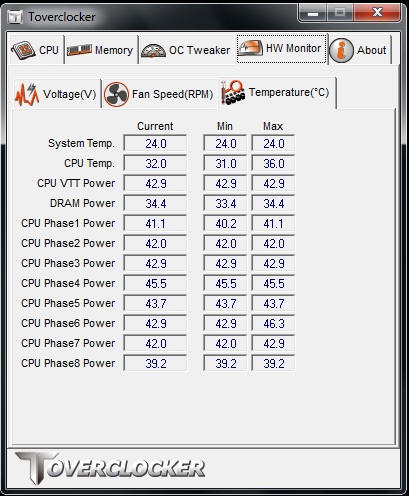
Two overclocking tools are bundled on the supplied CD; TPower & TOVERCLOCK. Both allow on-the-fly control of rail voltages and BCLK easily enough. Other features include, voltage/temperature monitoring, profile save/load and quick touch overclocking for those who prefer automated overclocking methods. The system runs a quick stability test, ramps bus frequencies and repeats this process until the system crashes. Upon reboot and relaunch of the TOVERCLOCKER utility the highest stable frequency is automatically selected and applied. We found this worked fairly well, although manual overclocking is always the best route. TPOWER software also includes VGA clock adjustment (for BIOSTAR VR8xxx series cards), mother board BIOS flashing and eHot-Line which allows collects system information and relays it back to BIOSTAR tech support in the event of a user support query.
One thing we did not like about TOVERCLOCKER, is that if you save a manual profile and then reload it, the software will attempt to reload the profile any time you reopen TOVERCLOCKER at a later date. This causes problems in situations where the profile overclock is considerably higher than the normal operating frequency, the system will crash before you can make any changes. The only way to rectify this is to either delete the saved profile manually, or reinstall the TOVERCLOCKER application. A better choice would be allow users to manually load the profile after the application launches. Overall, TOVERCLOCKER is a fairly well rounded utility, although we still prefer the outright simplicity and power of EVGA’s E-LEET utility for overclocking.
BIOS
The BIOS layout is very good and offers a significant amount of settings for overclocking.
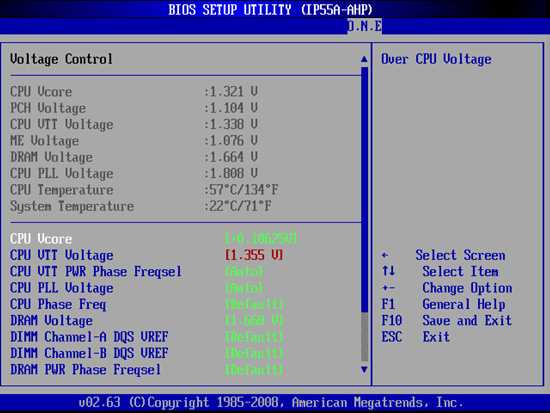
BIOSTAR’s O.N.E menu (Overclocking Navigator Engine) is where all the action takes place with a wide variety of adjustments including the CPU Core, PLL, VTT, PCH, VDimm and VRef voltages. Clock generator output voltage and skew adjustments are also available for maximum BCLK overclocking.
Overclocking profiles can be saved, loaded and individually named in one of the available 10 slots. A built in BIOS flashing function is available, allowing users to save and flash BIOS from a USB or floppy drive easily.
Fan control is only offered for the CPU fan header (via BIOS/TOVERCLOCKER/TPower), offering full temperature range and speed control which is great. Unfortunately the SYS fans cannot be controlled at all.
Let’s move on to the general layout and features...
















39 Comments
View All Comments
Joepublic2 - Thursday, November 26, 2009 - link
Rajinder, is there any way to differentiate the new foxconn sockets from the old (serial/part numbers, a visual difference between the two)?Rajinder Gill - Thursday, November 26, 2009 - link
Hi Joe,None that I know of I'm afraid. If I do find anything out, I'll update.
regards
Raja
NumericalMethods - Thursday, November 26, 2009 - link
In your great overclocking section I see you have once again exceeded the 1.21v Intel recommended Vtt specification (by a fair amount). Is this something you would be comfortable with for 24/7 running or is this just to demonstrate the limits of the board?I have no real concept of why the Vtt spec has changed from Bloomfield but if I were running a P55 system overclocked 24/7 I suspect I couldn't expect to reach a 4+GHz overclock - it would be limited by 'safe' voltage.
Rajinder Gill - Thursday, November 26, 2009 - link
The Intel voltage specifications are given out in relation to stock operating frequencies. Increase freqeuncy and you increase power, so if you're really following Intel guidelines, then you need to observe stock operating frequencies too.There is no definative answer to what kind of degredation a CPU will experience due to elevated voltage/current long term. One can assume that the degredation will be faster, but whether or not that will be a factor for the end-user is another matter. Of course, too much voltage is certainly asking for trouble. We generally run stuff just to show what the board can do. At least it answers the question for people who like to push hard. At the same time, if the board is stable at higher operating frequencies, the more sensible stuff is ceratinly possible.
regards
Raja
Absolution75 - Thursday, November 26, 2009 - link
I always find that the most relevant information to me is left out of every motherboard review.Benchmarks for motherboards are always very similar, in fact, they are so similar that in my opinion, aren't worth mentioning. If there is a strange issue with USB speeds being low (which I've seen before), then that probably is the only benchmark that really needs any type of graph. Do people really care if the board A gets a 1KBPS higher score on the network test than board B? I'm sure this is well within the margin of error of the test anyway. This may be what you're getting at when you guys have switched the conclusion to the first page of the review, which I thought was a good decision.
Relevant information that always seems to be missing:
1) Are the fan headers able to be controlled by bios? If so, how and how well? Can they all be controlled or just a few? Sometimes it specifies, but it fails to provide any real details.
2) The audio chip. Realtek did a wonderful job at creating 'optional' features on a few of their codec’s. I bought the MSI P55-GD65 board on launch date and assumed it could do real time DDL encoding (like my old gigabyte P45-UD3P which uses the same audio codec), little did I know, that this optional feature is disabled. Apparently 'true blue ray audio' doesn't really mean much. A simple paragraph about the audio chip's capabilities would be nice. Especially since some motherboards use VIA's codec’s which tend to be even more confusing than Realtek's.
3) Strange things such as mentioning who makes the chip for the NIC and other random things would be nice. For some reason, I have a good bias towards Marvell NICs. This information seems to be included more often lately :D
4) Information about how board features are integrated into the motherboard. Is that gigabyte NIC running off a PCI-E lane or PCI?
5) Useful information about strange features such TPM headers (which you made no mention of in the MSI P55-GD65).
Specifically for this review, it is said that this board is trying to compete with the MSI P55-GD65 and you say it has an advantage even though it is more expensive ($25-$45 more). How though? It is never really said. Both boards perform identically (in fact, probably any P55 board will perform identically to another. . .) and both have similar layouts. The MSI board has 1 more PCI-E slot along with an open slot PCI-E x4. How is this not an advantage? Both have dual NICs, 2 more SATA2 ports (with the MSI board having a better solution imo - the single blue slot on the board is useful for a disk drive leaving the entire 6x SATA2 ports on the P55 chipset for some type(s) or RAID) and digital audio.
Also, a complete guess, but board designers probably still include the floppy drive header just because its included in the chip they use for IDE and additional SATA (maybe jmicron doesn't make a chip that is just IDE/SATA instead of IDE/SATA/floppy), or maybe they just cost the same. . .
ereavis - Wednesday, December 9, 2009 - link
"Test Setup" is a big missing for me. What are you calling an "Intel P55" on these charts or all the Intel P55 motherboards from $90-$240 the same performance?g725s - Wednesday, December 2, 2009 - link
Cool conclusion on first page. Keep it up!Rajinder Gill - Wednesday, December 2, 2009 - link
Some seem to like it while others are not impressed (check the firs page of comments). I'll probably do some kind of exec front page summary in the future.later
Raja
treesloth - Monday, December 7, 2009 - link
FWIW, I like it. Interestingly to me, it's essentially the same layout and format that I use for my testing an analysis at work, so I actually feel sort of vindicated. :-)treesloth - Monday, December 7, 2009 - link
FWIW, I like it. Interestingly to me, it's essentially the same layout and format that I use for my testing an analysis at work, so I actually feel sort of vindicated. :-)